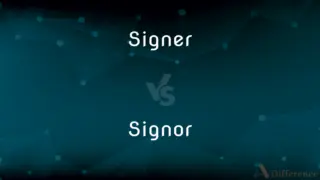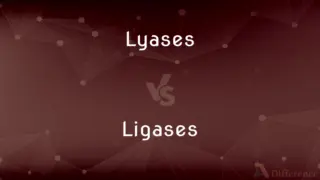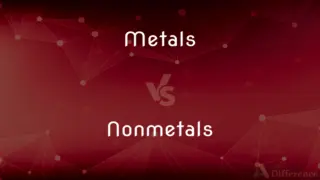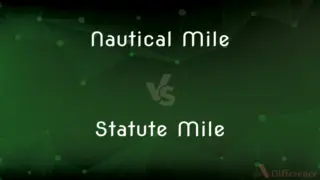Petroglyph vs. Hieroglyph — What's the Difference?
By Tayyaba Rehman & Fiza Rafique — Updated on September 9, 2023
Petroglyphs are rock carvings created by removing part of a rock surface, often prehistoric in origin. Hieroglyphs are written characters used especially in the ancient writing systems of Egypt, represented by figures and symbols.

Difference Between Petroglyph and Hieroglyph
Table of Contents
ADVERTISEMENT
Key Differences
Petroglyphs are primarily carved or etched into rock surfaces, usually with the intent to create images or symbols. Hieroglyphs, on the other hand, are more associated with writing and were typically inscribed on surfaces like stone, wood, or papyrus. Petroglyphs are more art than text, while hieroglyphs serve as a written language.
Petroglyphs are often considered prehistoric, found in various parts of the world, and usually do not form any known language. Hieroglyphs are most famously linked to ancient Egypt but are also found in other civilizations, and they often constitute an entire writing system. Petroglyphs generally convey broader concepts or ideas without linguistic specificity, whereas hieroglyphs can articulate detailed messages.
In terms of technique, petroglyphs are created by carving away the rock's surface, either by chipping or etching. Hieroglyphs are usually written or carved using a tool like a reed brush or chisel, and could even be painted. Both petroglyphs and hieroglyphs have been discovered on vertical surfaces, but the media and methods of creation differ considerably.
As for cultural significance, petroglyphs often carry deep historical and spiritual significance for indigenous people. Hieroglyphs are usually tied to formal systems of record-keeping, spirituality, and governance. While petroglyphs provide a snapshot of cultural imagery, hieroglyphs often reveal much about the legal, religious, and social systems of the society that produced them.
Comparison Chart
Medium
Rock
Various (stone, papyrus)
ADVERTISEMENT
Purpose
Art/Symbol
Written Language
Historical Era
Often Prehistoric
Ancient Civilizations
Technique
Carving/Chipping
Writing/Carving
Language
Usually Non-Linguistic
Linguistic
Compare with Definitions
Petroglyph
A rock carving made by chipping away the surface.
The petroglyph depicted an ancient hunting scene.
Hieroglyph
A written character in an ancient Egyptian writing system.
The hieroglyph represented the concept of life.
Petroglyph
A form of rock art created by removing part of a rock surface.
We found a petroglyph on our hike through the canyon.
Hieroglyph
A figure or symbol with specific meaning used in ancient writing.
Each hieroglyph had a unique pronunciation.
Petroglyph
A prehistoric etching on a rock surface.
The petroglyphs provided clues about the region's earliest inhabitants.
Hieroglyph
A symbolic picture carved or written for use in formal writing systems.
The tablet was filled with intricate hieroglyphs.
Petroglyph
A symbol or image carved into rock, often for ritualistic purposes.
The petroglyph was thought to have spiritual power.
Hieroglyph
An ancient carved or written symbol used in religious texts.
The hieroglyphs were essential for reading ancient prayers.
Petroglyph
An engraved or carved rock, typically carrying historical or spiritual significance.
The petroglyph served as a sacred site for indigenous people.
Hieroglyph
A writing element in an ancient system, often representing sounds, words, or concepts.
The hieroglyph was part of a complex writing system.
Petroglyph
A petroglyph is an image created by removing part of a rock surface by incising, picking, carving, or abrading, as a form of rock art. Outside North America, scholars often use terms such as "carving", "engraving", or other descriptions of the technique to refer to such images.
Hieroglyph
A hieroglyph (Greek for "sacred carvings") was a character of the ancient Egyptian writing system. Logographic scripts that are pictographic in form in a way reminiscent of ancient Egyptian are also sometimes called "hieroglyphs".
Petroglyph
A rock carving, especially a prehistoric one.
Hieroglyph
A stylized picture of an object representing a word, syllable, or sound, as found in ancient Egyptian and certain other writing systems
Hieroglyphs describing the Mayan calendar
Petroglyph
A carving or incised drawing on rock, especially one made by prehistoric people.
Hieroglyph
A picture or symbol used in hieroglyphic writing.
Petroglyph
(archaeology) A rock carving, especially one made in prehistoric times.
Hieroglyph
Something that suggests a hieroglyph.
Hieroglyph
An element of an ideographic (hieroglyphic) writing system.
Hieroglyph
(informal) Any obscure or baffling symbol.
Hieroglyph
To represent by hieroglyphs.
Hieroglyph
A sacred character; a character used in picture writing, as of the ancient Egyptians, Mexicans, etc. Specifically, in the plural, the picture writing of the ancient Egyptian priests. It is made up of three, or, as some say, four classes of characters: first, the hieroglyphic proper, or figurative, in which the representation of the object conveys the idea of the object itself; second, the ideographic, consisting of symbols representing ideas, not sounds, as an ostrich feather is a symbol of truth; third, the phonetic, consisting of symbols employed as syllables of a word, or as letters of the alphabet, having a certain sound, as a hawk represented the vowel a.
Hieroglyph
Any character or figure which has, or is supposed to have, a hidden or mysterious significance; hence, any unintelligible or illegible character or mark.
Hieroglyph
Writing that resembles hieroglyphics (usually by being illegible)
Hieroglyph
A writing system using picture symbols; used in ancient Egypt
Common Curiosities
Where can Petroglyphs be commonly found?
Petroglyphs can be found worldwide, often in areas with significant rock surfaces.
What is a Petroglyph?
A petroglyph is a rock carving made by removing part of a rock surface.
Are Petroglyphs a form of writing?
Generally, petroglyphs are not considered a form of writing but more as art or symbols.
What is a Hieroglyph?
A hieroglyph is a written character used especially in ancient Egyptian writing.
Are Hieroglyphs a form of writing?
Yes, hieroglyphs are a form of writing, especially in ancient civilizations like Egypt.
How are Hieroglyphs created?
Hieroglyphs are usually carved or written using tools like reed brushes or chisels.
Where are Hieroglyphs commonly found?
Hieroglyphs are most famously found in Egypt but also exist in other ancient civilizations.
Are Petroglyphs tied to specific civilizations?
Petroglyphs are often prehistoric and not tied to any known civilization.
Do Petroglyphs have linguistic meaning?
Generally, petroglyphs do not have linguistic meaning but convey broader ideas or concepts.
How are Petroglyphs created?
Petroglyphs are created by carving or chipping away at a rock surface.
Can Petroglyphs be painted?
Typically, petroglyphs are carved rather than painted.
Can Hieroglyphs be painted?
Yes, hieroglyphs can be either carved or painted.
Do Hieroglyphs have linguistic meaning?
Yes, hieroglyphs are often part of a writing system and have specific linguistic meanings.
Are Hieroglyphs tied to specific civilizations?
Yes, hieroglyphs are usually associated with specific ancient civilizations like Egypt.
What do Petroglyphs usually depict?
Petroglyphs often depict animals, humans, or symbolic patterns.
Share Your Discovery

Previous Comparison
Snigger vs. Giggle
Next Comparison
Dhole vs. WolfAuthor Spotlight
Written by
Tayyaba RehmanTayyaba Rehman is a distinguished writer, currently serving as a primary contributor to askdifference.com. As a researcher in semantics and etymology, Tayyaba's passion for the complexity of languages and their distinctions has found a perfect home on the platform. Tayyaba delves into the intricacies of language, distinguishing between commonly confused words and phrases, thereby providing clarity for readers worldwide.
Co-written by
Fiza RafiqueFiza Rafique is a skilled content writer at AskDifference.com, where she meticulously refines and enhances written pieces. Drawing from her vast editorial expertise, Fiza ensures clarity, accuracy, and precision in every article. Passionate about language, she continually seeks to elevate the quality of content for readers worldwide.















































